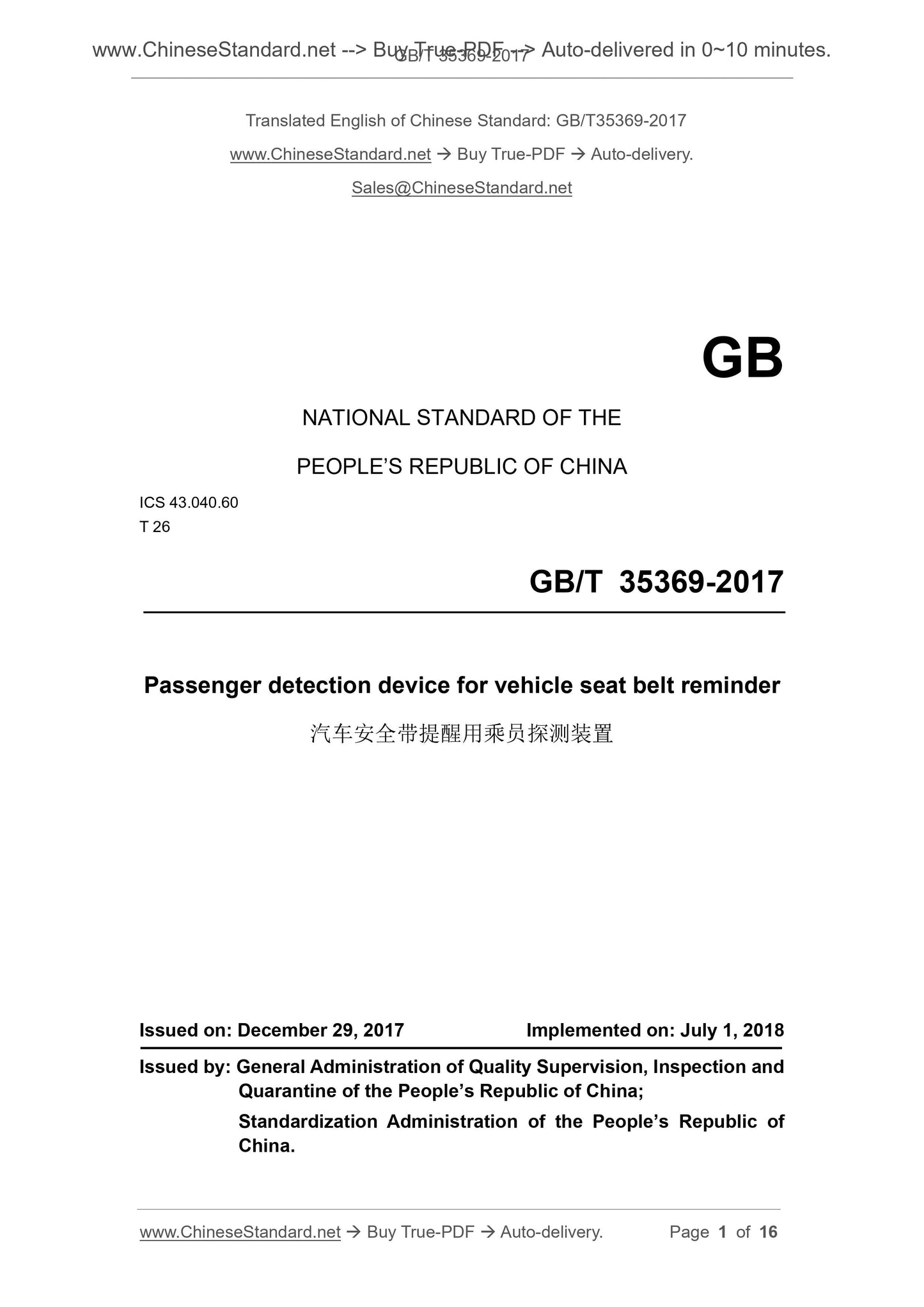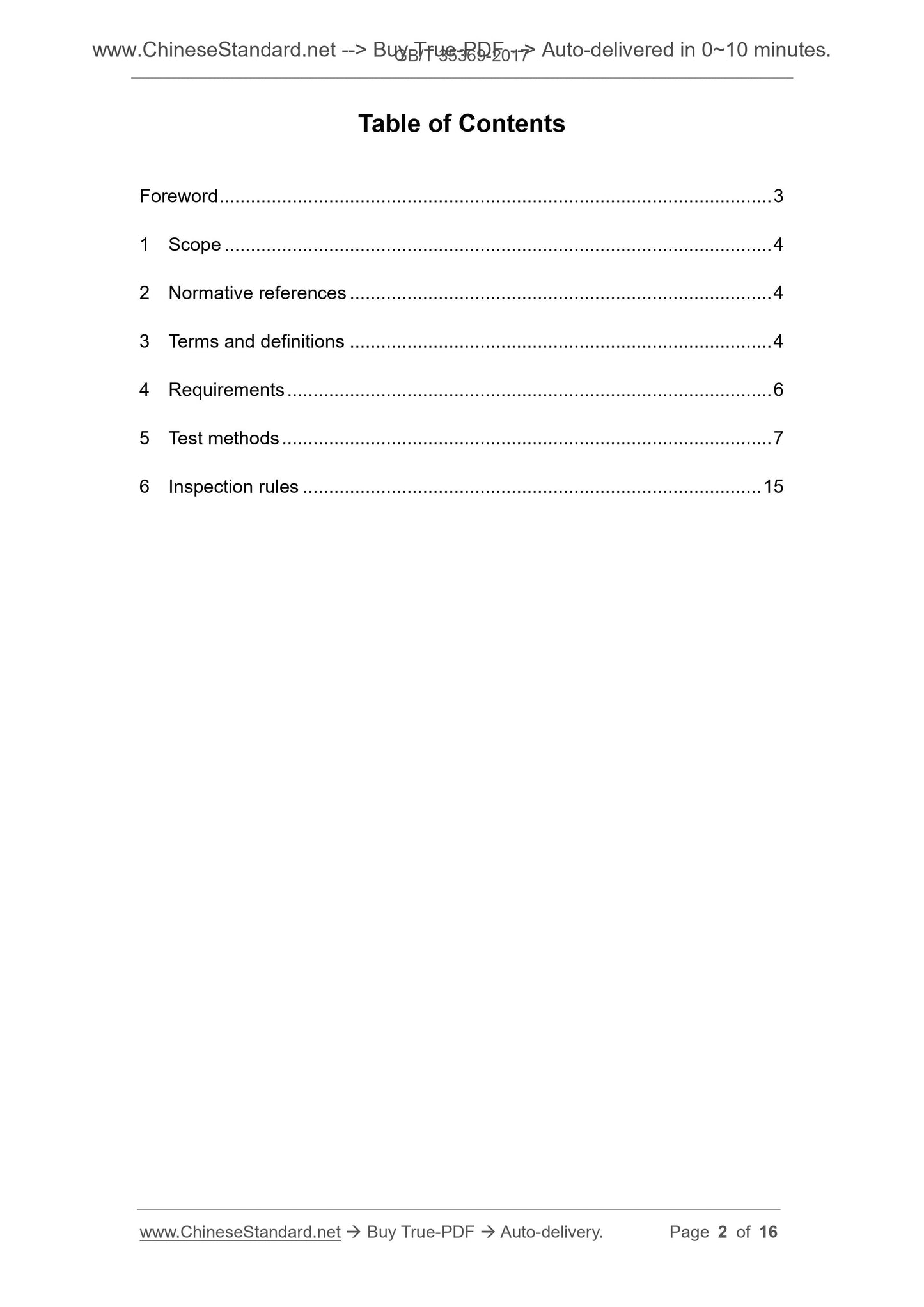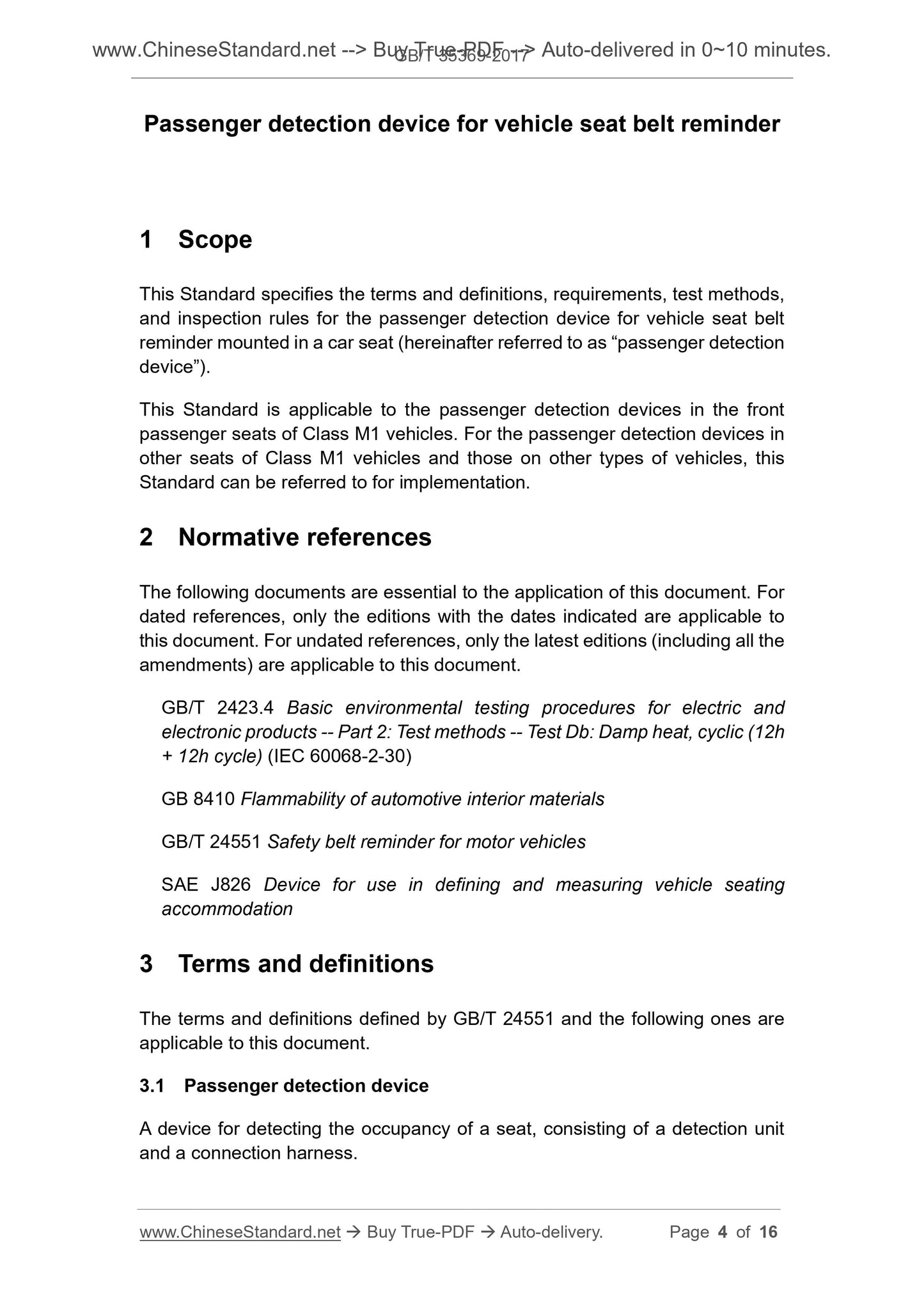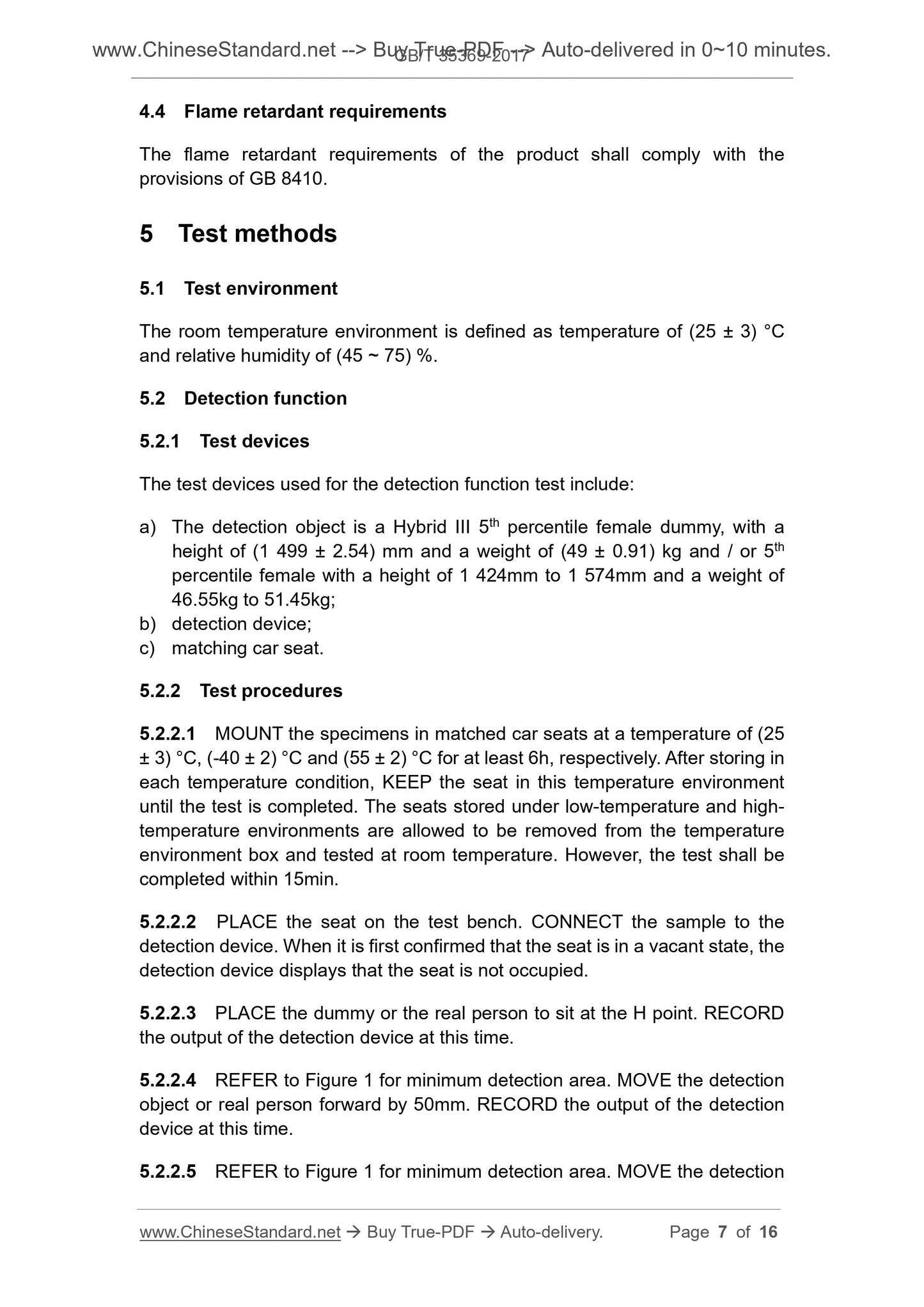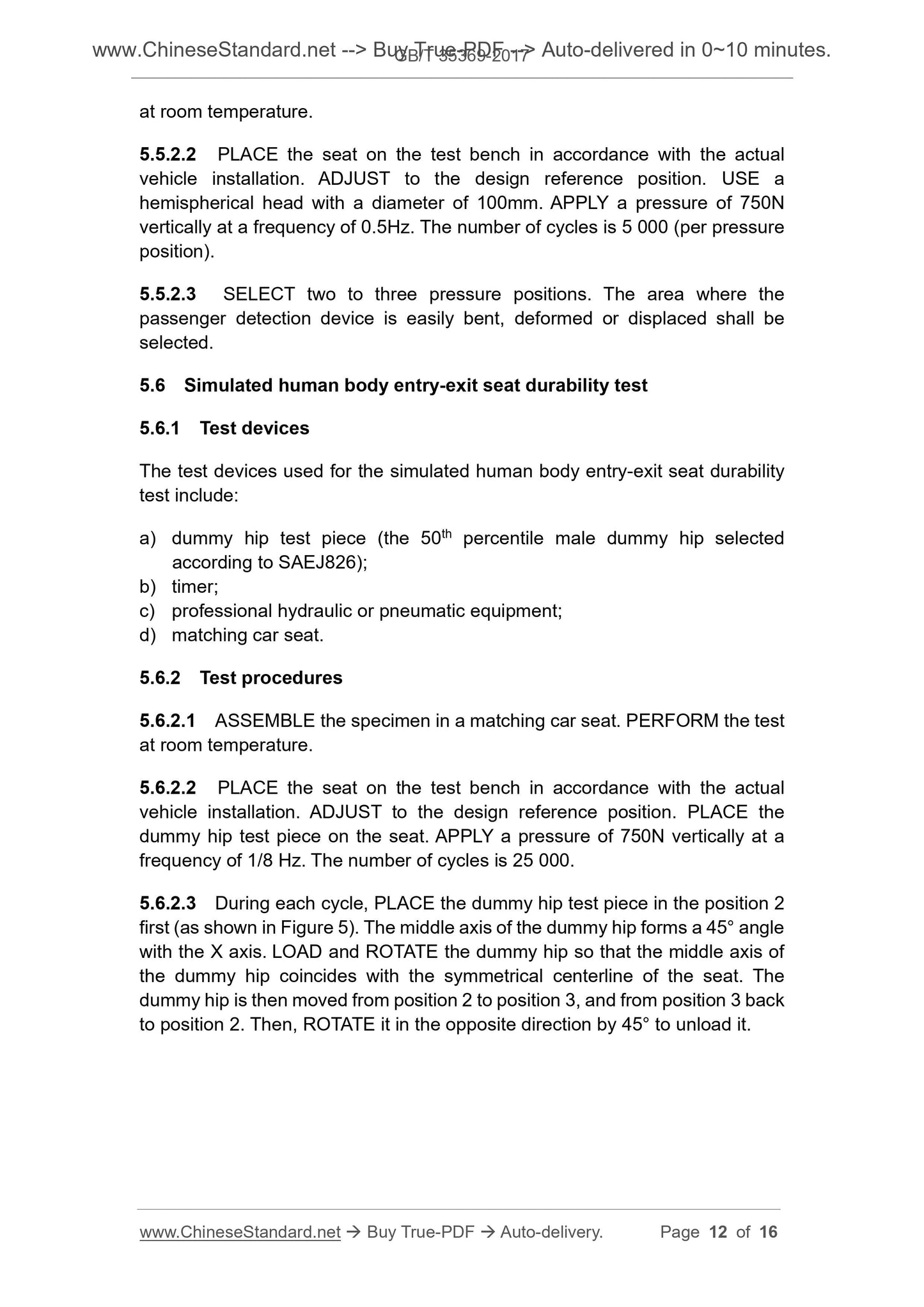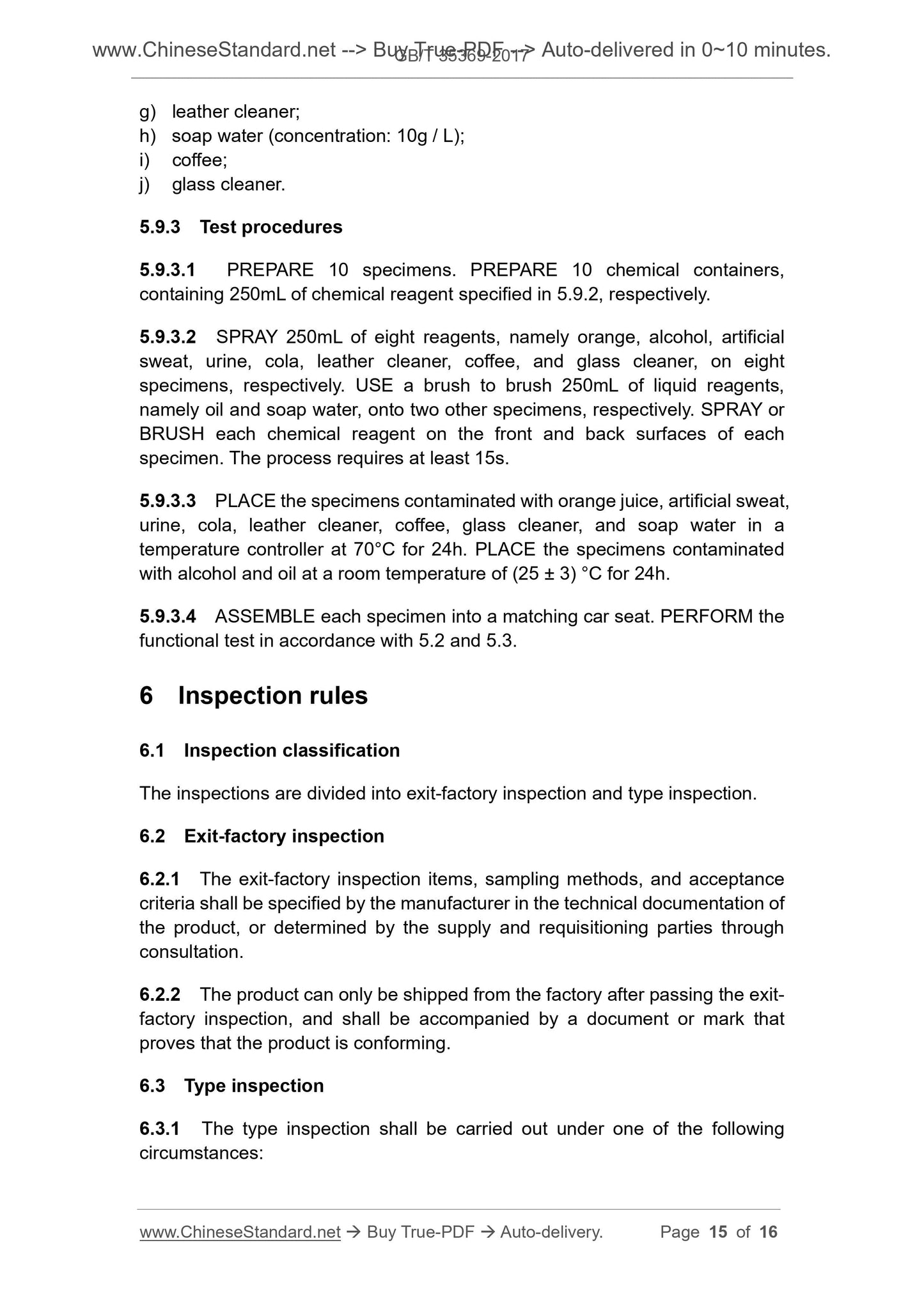1
/
of
6
www.ChineseStandard.us -- Field Test Asia Pte. Ltd.
GB/T 35369-2017 English PDF (GB/T35369-2017)
GB/T 35369-2017 English PDF (GB/T35369-2017)
Regular price
$150.00
Regular price
Sale price
$150.00
Unit price
/
per
Shipping calculated at checkout.
Couldn't load pickup availability
GB/T 35369-2017: Passenger detection device for vehicle seat belt reminder
Delivery: 9 seconds. Download (and Email) true-PDF + Invoice.Get Quotation: Click GB/T 35369-2017 (Self-service in 1-minute)
Newer / historical versions: GB/T 35369-2017
Preview True-PDF
Scope
This Standard specifies the terms and definitions, requirements, test methods,and inspection rules for the passenger detection device for vehicle seat belt
reminder mounted in a car seat (hereinafter referred to as “passenger detection
device”).
This Standard is applicable to the passenger detection devices in the front
passenger seats of Class M1 vehicles. For the passenger detection devices in
other seats of Class M1 vehicles and those on other types of vehicles, this
Standard can be referred to for implementation.
Basic Data
| Standard ID | GB/T 35369-2017 (GB/T35369-2017) |
| Description (Translated English) | Passenger detection device for vehicle seat belt reminder |
| Sector / Industry | National Standard (Recommended) |
| Classification of Chinese Standard | T26 |
| Classification of International Standard | 43.040.60 |
| Word Count Estimation | 14,167 |
| Date of Issue | 2017-12-29 |
| Date of Implementation | 2018-07-01 |
| Regulation (derived from) | National Standards Bulletin 2017 No. 32 |
| Issuing agency(ies) | General Administration of Quality Supervision, Inspection and Quarantine of the People's Republic of China, Standardization Administration of the People's Republic of China |
Share
